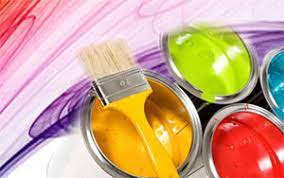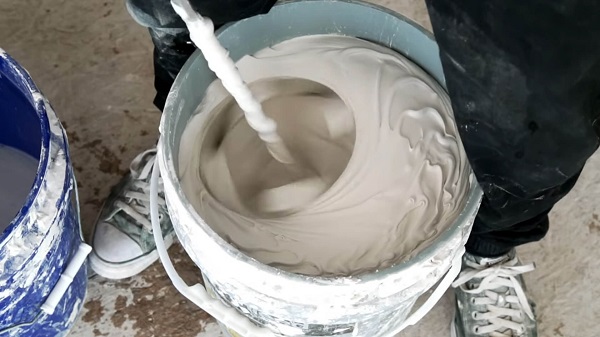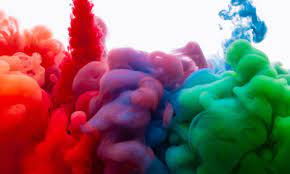Leveling agent is a commonly used coating additive, which can promote the coating to form a smooth and uniform coating film during the drying and film-forming process. There are many types of leveling agents, and the types of leveling agents used in different coatings are also different.

This article will describe the contents of leveling agents:
What factors will affect the leveling additive properties?
There are many factors affecting the leveling of coatings, such as solvent volatility gradient and solubility, coating surface tension, wet film thickness and surface tension gradient, coating rheology, air draft sensitivity, construction process and environment, etc. The most important factor is the surface of the coating. Tension, the surface tension gradient produced by the wet film during film formation, and the surface tension homogenization ability of the wet film surface layer. To improve the leveling of coatings, it is necessary to consider adjusting the formulation and adding suitable additives, so that the coatings have suitable surface tension and the ability of a strong surface tension reduction.

What are the common problems during coating?
The common surface defects of coating drying and film formation are shrinkage craters, orange peel, brush marks, rolling marks, sagging and so on.
After the coating is applied, there is a flow and drying film-forming process, and then a smooth and uniform coating film is gradually formed. Whether the coating film can achieve smooth characteristics is called leveling. Shrinkage crater is one of the characteristic defects of coatings in the process of leveling and film formation. In the actual construction process, due to poor leveling, brush marks appear during brushing, rolling marks appear during rolling, orange peel appears during spraying, and shrinkage cavities, pinholes, sagging and other surface defects are accompanied during the drying process. Known as poor leveling, the occurrence of these phenomena reduces the decorative and protective functions of coatings.
What is shrinkage craters?
Shrinkage crater refers to the irregular, bowl-shaped small depressions formed on the coating film, which make the coating film lose its smoothness. It is often centered on a drop or a small piece of impurities, and a ring-shaped edge is formed around it. From the point of view of leveling, it is a special "point" unevenness, which is generated on the surface of the coating film. Its shape can be divided into the flat, crater, point, bottom-out, bubble formula, etc.
Commonly used anti-shrinkage leveling agents
1. Solvent-based leveling agents
Solvent-based leveling agents are mainly high-boiling solvent mixtures.
It can improve leveling only by adding solvent to reduce viscosity, which will reduce coating solids and cause problems such as sagging. Or keep the solvent content, only add high boiling point solvent to adjust the volatilization speed to improve the leveling, and the drying time is also extended accordingly. Therefore, both options are not ideal.
Only the addition of a high-boiling solvent mixture that exhibits various incremental properties (volatile index, distillation curve, solvency) is appropriate. The main components of the agent leveling agent are various mixed solvents with a high boiling point, which have good solubility and are also good wetting agents for pigments. The room temperature curing coatings cause brush marks due to the solvent volatilization too fast, the viscosity of the coating increases too fast and hinders the flow, and the solvent volatilization leads to shrinkage cavities caused by the poor solubility of the base material, or boiling marks and blistering in baking coatings. Therefore, the use of such additives is very effective. In addition, the use of a high-boiling point leveling agent to adjust the volatilization speed can also overcome the ills of whitening.

2. Long-chain resins
Long-chain resins with restricted compatibility are commonly used, such as polyacrylic acid and vinyl butyl cellulose.
They have low surface tension, which can reduce the surface tension between the coating and the substrate and improve the wettability of the coating to the substrate, exclude the gas molecules adsorbed on the surface of the coated solid, prevent the adsorbed gas molecules from being excluded too late and forming cavities, shrinkage holes, orange peel and other defects on the surface of the cured coating film; in addition, they are not fully compatible with the resin and can quickly migrate to the surface to form a single molecular layer to ensure that the surface. In addition, they are not completely mixed with the resin and can quickly migrate to the surface to form a single molecular layer to ensure that the surface tension is homogeneous, increasing the effect of anti-cratering, thereby improving the smoothness of the surface of the film. Polyacrylate leveling agent can be divided into pure polyacrylate, modified polyacrylate (or combined with silicone), acrylic alkali resin, etc., pure polyacrylate leveling agent with ordinary epoxy resin, polyester, etc. The compatibility of pure polyacrylate leveling agent with ordinary epoxy resin, polyester resin or polyurethane and other coating resins is very poor, the application will form a foggy coating film. In order to improve compatibility, copolymers with better compatibility are usually used.

3. Long-chain silicone resins
Commonly used long-chain silicone resins with limited compatibility include Polydimethylsiloxane, Polymethylphenylsiloxane, Organo-modified polysiloxane, and the like.
These substances can improve the wettability of the substrate and control the surface flow, which can improve the leveling effect. When the solvent evaporates, the silicone resin forms a monomolecular layer on the surface of the coating film to improve the gloss of the coating film. Modified polysiloxanes can be further divided into polyether-modified silicones, polyester-modified silicones, and reactive silicones. The introduction of organic groups helps to improve the compatibility of polysiloxanes and coating resins without incompatibility and side effects even if the concentration is increased. Modified polysiloxane can reduce the interfacial tension between the coating and the substrate, improve the wettability to the substrate, improve the adhesion, prevent blooming, orange peel, reduce shrinkage cavities, pinholes and other surface diseases of the coating film.
Fluorine-based surfactants, whose main components are polyfluorinated polyolefins, have good compatibility and surface activity with many resins and solvents. Helps to improve wetting, dispersing agents and leveling, and can also adjust the rate of solvent evaporation in solvent-based paints.

Why use leveling agents in paint formulations?
The main function of paint is to decorate and protect. If flow and leveling defects occur, they not only affect the appearance but also impair the protective function. The formation of shrinkage holes can lead to inadequate film thickness and pinholes can lead to discontinuity, which can reduce the protective properties of the paint film.
In the process of construction and film formation, some physical and chemical changes will occur, these changes and the nature of the paint itself will significantly affect the flow and leveling of the paint.
After the coating is applied, new interfaces will appear, typically the liquid/solid interface between the coating and the substrate and the liquid/air interface between the coating and the air. Suppose the interfacial tension at the liquid/solid interface between the paint and the substrate is higher than the critical surface tension of the substrate. In that case, the paint will not be able to spread on the substrate and will naturally produce leveling defects such as fish eyes and shrinkage.
The evaporation of solvents during the drying process leads to differences in temperature, density and surface tension between the surface and the interior of the paint film, which in turn leads to turbulent movements within the film, resulting in the so-called Benard vortex, which can lead to orange peel. They can lead to puffing and blooming, and to filigree on vertical surfaces.

Insoluble particles are sometimes produced during the drying of the paint film, which can lead to the formation of surface tension gradients, often resulting in the formation of shrinkage in the paint film. For example, in cross-linked curing systems, where the formulation contains more than one resin, insoluble particles may be formed from less soluble resins as the solvent evaporates during the drying process. Also, in formulations containing surfactants, if the surfactant is incompatible with the system, or if its concentration changes as the solvent evaporates during drying leading to changes in solubility and the formation of incompatible droplets, a surface tension difference may also form. All of these may lead to the creation of shrinkage holes.
The presence of external contaminants during the construction and film formation process of a coating may also lead to leveling defects such as shrinkage and fish eyes. These contaminants are usually oil, dust, paint mist, water vapour etc. from the air, construction tools and substrates.
The nature of the paint itself, such as working viscosity and drying time, can also have a significant effect on the final leveling of the paint film. Too high an application viscosity and too short a drying time will usually produce a poorly leveled surface.
Therefore, it is necessary to help the paint to obtain a good flow by adding leveling additives, by adjusting the paint to some changes that occur during construction and film formation and by the nature of the paint.
What are the types of leveling agents?
Leveling agents are roughly divided into two categories. One is by adjusting the viscosity and leveling time of the paint film, the other is by adjusting the surface properties of the paint film
1. Adjust the viscosity and leveling time
Most of these leveling agents are some high-boiling organic solvents or their mixtures, such as isophorone, diacetone alcohol, Solvesso150, etc.
2. Adjust the surface properties
Generally speaking, the leveling agent mostly refers to this type of leveling agent. This type of leveling agent migrates to the surface of the paint film through limited compatibility, affects the surface properties such as the interfacial tension of the paint film, and enables the paint film to obtain good leveling.
According to different chemical structures, there are three main types of leveling agents: acrylic, silicone and fluorocarbon.
●Acrylic leveling agent
Acrylic leveling agents include pure acrylic leveling agents and modified acrylic leveling agents.
Pure acrylic leveling agents include traditional non-reactive acrylic leveling agents and new reactive acrylic leveling agents containing tube energy groups. This is a class of acrylic homopol ymers or copolymers with varying molecular weights. This type of leveling agent only slightly reduces the surface tension of the paint, but can balance the difference in the surface tension of the paint film to obtain a truly flat, mirror-like paint film surface. If the molecular weight is high enough, such leveling agents also have a degassing and defoaming effect. The disadvantages of traditional non-reactive acrylic leveling agents are high molecular weight products, which may cause haze in the paint film, and low molecular weight products, which may reduce the surface hardness of the paint film. Acrylic leveling agents containing reactive functional groups can solve this contradiction very well, providing good leveling without generating haze or reducing surface hardness, and sometimes increasing surface hardness.
The main types of modified acrylic leveling agents are fluorine-modified acrylic leveling agents and phosphate-modified acrylic leveling agents. Unlike pure acrylic leveling agents, modified acrylic leveling agents can significantly reduce the surface tension of coatings, which results in good substrate wetting along with leveling properties.
●Silicone leveling agent
Silicone leveling agents have two notable properties. First, it can significantly reduce the surface tension of the coating, improve the substrate running ability of the coating and the fluidity of the paint film, and eliminate the Benard vortex to prevent blooming. The ability to lower surface tension depends on its chemical structure. Another notable feature is improved coating smoothness, scratch resistance and blocking resistance. The disadvantage of this type of leveling agent is the tendency of foam stabilization, which affect the adhesion between layers, and some also polluting the construction environment such as ovens. There are three main types of its structure: polydimethylsiloxane, polymethylalkylsiloxane, organo-modified polysiloxane, with organo-modified polysiloxane being the most important, pure polydimethylsiloxane. Alkane is now rarely used due to poor compatibility with coating systems.
●Fluorocarbon leveling agent
Fluorocarbon leveling agents are characterized by high efficiency, but are expensive. They are generally used when acrylic leveling agents and silicone leveling agents are difficult to function. However, they also tend to stabilize foam and affect the adhesion between layers.
Application of leveling agent
For a certain formulation system, the appropriate type of leveling agent should be selected according to the properties of the formulation and the desired performance of the leveling agent.
1. Solvent-based coating system
Acrylic leveling agents are commonly used in primer and midcoat formulations. If degassing and substrate wettability are required, the
Choose a medium molecular weight or high molecular weight acrylic leveling agent. In primers, if stronger substrate wetting is required, silicone leveling agents and modified acrylic leveling agents (such as fluorine-modified acrylic leveling agents and phosphate ester-modified leveling agents) that can significantly reduce surface tension can be considered. If the silicone leveling agent and fluorine-modified acrylic leveling agent have side effects such as stabilizing foam and affecting the adhesion between layers, the phosphate-modified acrylic leveling agent should be used.
In the formulation of topcoat and clearcoat, the requirements for the appearance of the paint film are relatively high. Generally, a low molecular weight acrylic leveling agent can be used, which will obtain good leveling properties, and it is not easy to produce haze in the paint film. In the cross-linking curing system, the use of acrylic leveling agents containing reactive functional groups often achieves better leveling and improves the physical and chemical properties of the paint film. If the paint film is required to have better fluidity or smoothness and scratch resistance, a silicone leveling agent is necessary. In this case, it is best to use a silicone leveling agent and an acrylic leveling agent.
It should be pointed out that, when applied on a vertical surface, the silicone leveling agent can effectively reduce the sag tendency of the coating while providing leveling performance. In addition, silicone leveling agents should be used with caution in metallic glitter paint formulations, as they may result in an uneven arrangement of flake aluminum pigments resulting in uneven paint film color.
2. Powder coating system
The leveling process of powder coatings is divided into two stages. The first stage is the melting of powder particles, and the second stage is when the powder particles melt and flow into a smooth paint film. Powder coatings are solvent-free and do not produce surface tension gradients during film formation, and leveling is more related to substrate wetting.

Acrylic leveling agents are often used in powder coatings. If the leveling agent is in a liquid state, it must be pre-made into a master batch before use. There are also acrylic leveling agents made of powder, which are specially used for powder coatings. This type of product adsorbs liquid acrylic leveling agents on silica powder, and some low-grade leveling agents are adsorbed with calcium carbonate.
If the powder coating needs smoothness and scratch resistance, it is necessary to use a silicone leveling agent. There are silicone leveling agents specially used for powder coatings that have been made into powder. When using silicone leveling agents, care should be taken to avoid the formation of shrinkage cavities.
3. Water-based coating system
Water-based coating systems are divided into water-soluble systems and latex systems.

In water-soluble systems, it is necessary to strongly reduce the surface tension of the system, the most commonly used silicone leveling agents and fluorocarbons The most commonly used leveling agents are silicone leveling agents and fluorocarbons, which play the same role as they do in solvent-borne coating systems. Of course, if a truly flat surface is required, acrylic leveling agents for aqueous systems are necessary.
For the latex system, the film-forming mechanism is completely different, and the viscosity does not change with the volatilization of the solvent. The use of leveling agent in the formulation may improve the substrate wettability of the coil coatings. Acrylic leveling agents can improve the smoothness of the paint film, but the main flow properties of the coating are more controlled and adjusted by adding rheology control agents.

